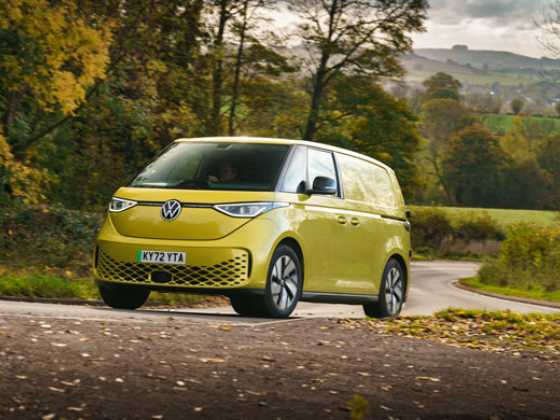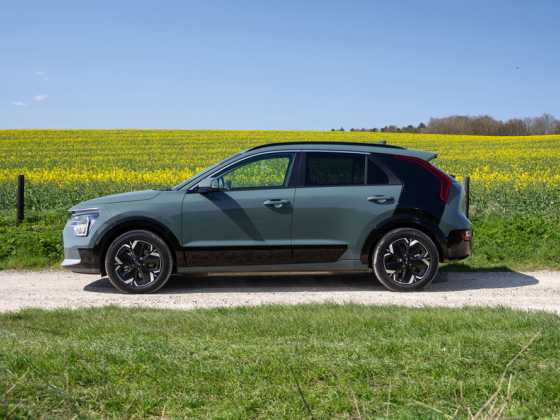Kia confirms forward plan
Faced with demoralising fuel costs, councils slapping on city idling fines and high car costs, South Korean carmaker Kia Motors may have an answer, which Iain Robertson drove exclusively for GreenFleet® in Germany
 Korean carmakers are not merely playing ‘catch-up’ with their European rivals but are set to snatch technological leads away from them in the very near future. This is what led me to drive the latest eco-friendly versions of the record-breaking cee’d model and both a petrol-electric hybrid alternative and fuel cell Kia Sportage at the company’s European Design Centre (after which the cee’d model is named) in Frankfurt.
Korean carmakers are not merely playing ‘catch-up’ with their European rivals but are set to snatch technological leads away from them in the very near future. This is what led me to drive the latest eco-friendly versions of the record-breaking cee’d model and both a petrol-electric hybrid alternative and fuel cell Kia Sportage at the company’s European Design Centre (after which the cee’d model is named) in Frankfurt.
By working closely with tyre manufacturer Michelin, which has formulated a new Energy-saver cover (reduces CO2 level by 5g/km), improving the aerodynamics of the car and introducing a ‘stop-start’ function, the cee’d’s CO2 level can be reduced from its normal 145g/km. Of course, ‘stop-start’ is not new and several carmakers (among them Citroen and BMW) have their own slant on how to work the technology.
In the 1.4-litre petrol cee’d, by selecting neutral in the conventional gearbox and applying the handbrake, while resting the left foot on the clutch pedal, the engine cuts obligingly, only restarting rapidly once a gear is taken up. Apart from the inclusion of the new mild-hybrid technology, this is moving towards the sub-120g/km model that Kia has confirmed will be introduced within the next 12 months and will join the 89bhp 1.6-litre diesel that already boasts 119g/km.
Further developments
The company has, however, also developed an alternative petrol-electric hybrid model, which is currently under-going extensive trials. It is a mild (or soft) series hybrid, which means that it will not run on electric power alone, however, its 180V, 5Ah Lithium-ion battery pack (safer, more compact and more durable than the Nickel Metal-hydride types currently in use by Toyota and Honda) can provide other benefits.
Naturally, ‘stop-start’ is one. Yet the package also includes an in-house developed CVT transmission, brake energy recovery and a modest amount of extra power (15kW) for occasional accelerative boosts. Thus equipped, the CO2 figure has dropped from the standard 152g/km of the 1.6-litre petrol engine to 114g/km of the hybrid. Yet, there is no performance deficit, as the constantly variable transmission is mega-efficient and offers five ‘manual’ step-off points (which gives the impression of a 6-speed gearbox, even though there are no gears) and the electric ‘boost’ also makes the car quicker in the important mid-range.
The development programme has far from reached its conclusion and hybrid technology can only ever be regarded as an interim measure, until full hydrogen fuel-cell development is completed and a refuelling infrastructure is in place, not just in the UK. Yet, it is hugely satisfying that Kia Motors, a company that only started exporting its models from South Korea as recently as 20 years ago, has dedicated so much of its resources to creating environmentally-sound transport.
Fuel-cell technology
This is never more obvious than in its FCEV project, now fitted to a Sportage model. Already the fuel-cell advancements have lifted it to produce no less than 100kW (approx. 134bhp) of power. Although slightly eerie, accompanied by a gentle whirr from the electric motors, its performance is outstandingly zesty. Acceleration is strong (0-60mph in around 10.0 seconds) and the car can exceed 106mph maximum, which means that its performance, despite the inherent weight increase, is broadly similar to the standard petrol model. With most of the engineering mass positioned quite low in the chassis, its dynamic handling was far better than expected.
The vehicle has passed all high and low temperature tests, survived a 50kph rear collision and its Li-Ion polymer battery has a remarkable range of 375miles, fuelled by hydrogen and emitting only water vapour from its exhaust pipe. Naturally, it is the ultimate example of ‘power at virtually no cost’. It can be readied for full production at the drop of a hat, so the fuel companies ought to get their acts into gear and start giving more priority to opening up Hydrogen stations across Europe.
In each case, Kia’s prototypes are enjoyably driveable and so competently assembled that they feel like full production vehicles. Yet, it is clear that the programme is not yet finalised. Packaging is an important element that will be addressed as the various models reach their next stages, as will ensuring that the end-user is not compromised in any way, in terms of driving satisfaction. Although the company realises that several of its current line-up of models do not meet the 2012 EU Emissions proposals, by concentrating its efforts on reducing rolling resistance in conjunction with its partner Michelin, improving aerodynamics, reducing weight, making thermo-dynamic improvements and enhancing power-train efficiency, it will not only comply but will succeed in its endeavours. Kia has the power to surprise.
Kia cee’d ‘stop start’,
Kia cee’d hybrid,
Kia Sportage FCEV
BODY STYLE: 5dr hatchback, and SUV
ENGINE: 1.4 (P4), 1.6 (P/E4), 100kW (FC)
IN THE SHOWROOM: from 2009
STAR RATING: 5 stars
WARRANTY: 5 years, unlimited miles









